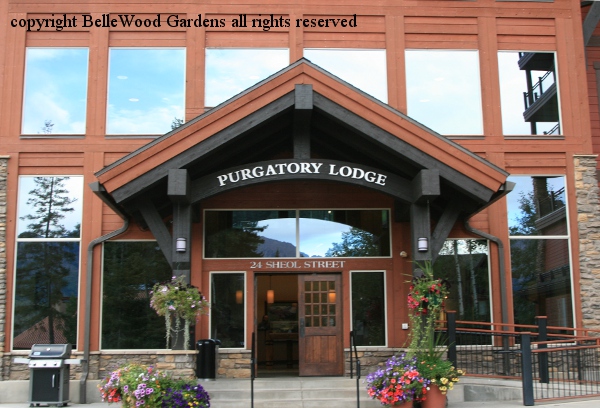
.
If you have any comments, observations, or questions about what you read here, remember you can always Contact Me
All content included on this site such as text, graphics and images is protected by U.S and international copyright law.
The compilation of all content on this site is the exclusive property of the site copyright holder.
"Come visit." said our daughter and son-in-law. They own a quarter share (two weeks every two months) of a fully furnished three bedroom, three bath apartment at Durango Mountain Resort. The United States is huge and sprawling 3,000 miles from east to west. We need to travel to southwestern Colorado, the Four Corners region. It is a day's travel from New Jersey - a little over 4 hours flight time from Newark Liberty Airport to Denver, then a little under an hour from Denver to Durango. Where we were met, bundled into the Toyota Tundra 4 X 4 (you will hear more about this vehicle later) and drive the 25 miles to Purgatory Lodge, on Sheol Street.

Hardly purgatory, more like halfway to heaven. Well, not quite that high.
Elevation is a mere 9,300 feet. Which means water boils at 194 degrees Fahrenheit.
Saturday, 19 September 2015
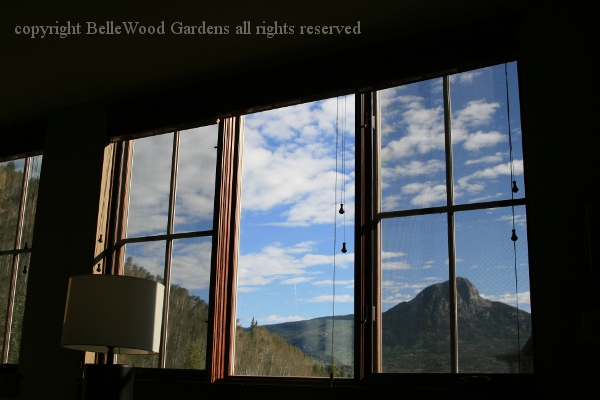
Next morning's view out the apartment's living room windows.
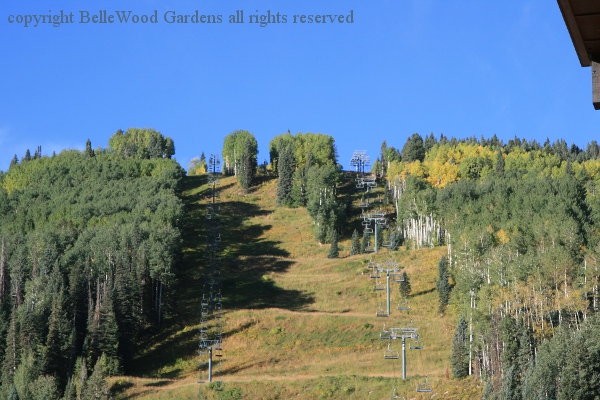
A ski resort in winter, also popular with tourists in summer,
spring and fall are the quiet times when upgrades are installed.
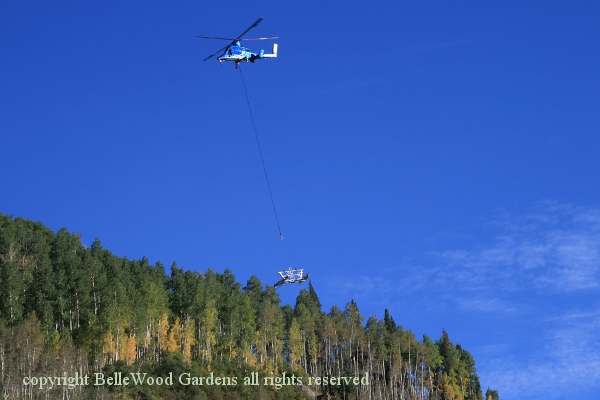
One upgrade is the refurbishment of a two-chair ski lift into four-chair. How to move the bits and pieces? Easy if you know how. They're using a Kaman K-MAX (K-1200) American helicopter with intermeshing rotors (synchropter) optimized for external cargo load operations, and able to lift a payload of over 6,000 pounds (which is more than the helicopter's empty weight. )
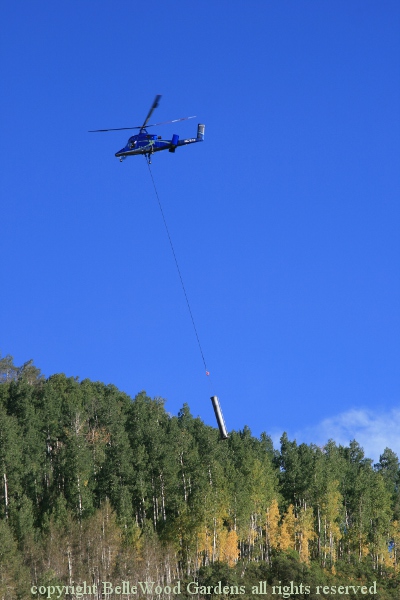
Referred to as an aerial truck, the K-MAX is the world's first helicopter specifically designed, tested, and certified for repetitive external lift operations.

It is amazing - the machine hovers over the parking lot filled with chair lift pylons and ski lift carriers, hooks on, flies off, load is released, only to repeat again and again and again. One day, to move all the pieces. We watch, first from the apartment's balcony and then from the roadway adjacent to the hook on / lift off staging area.
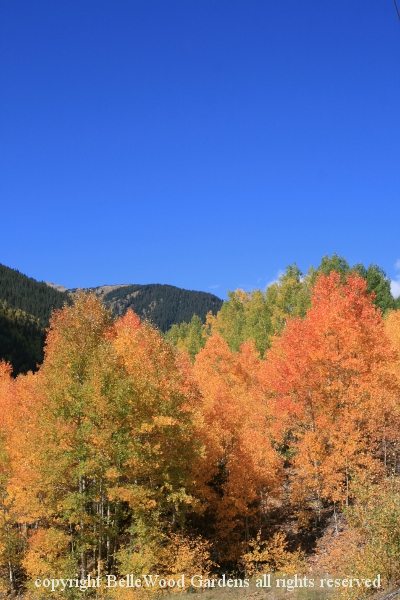
Autumn in the Rocky Mountains. Below tree line the forests are mostly conifers - spruce and fir - with aspens as the dominant deciduous tree. This is the time of year when they turn color. Some are a rich russet orange
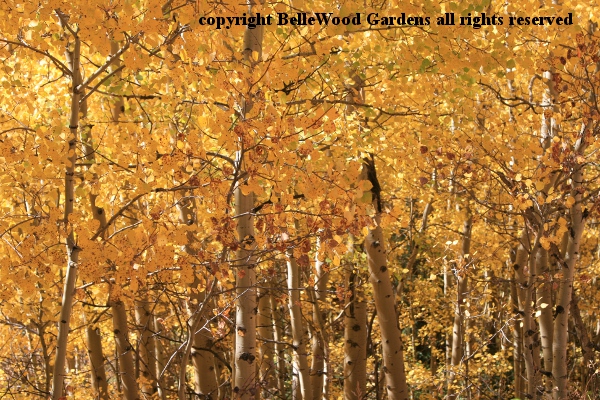
but the predominant color is a luscious golden yellow, a reminder of the area's mining history.
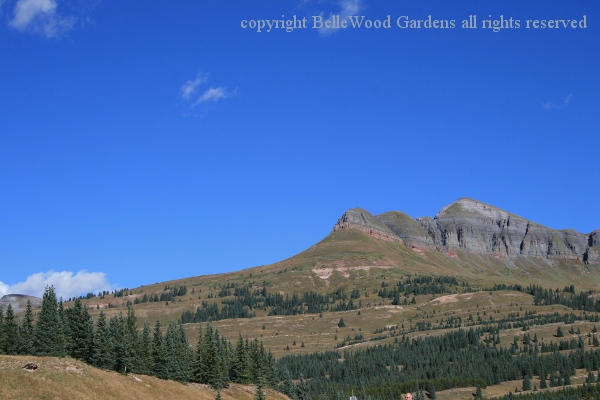
A brief stop at Molas Pass on our way to Ouray. At 10,910 feet this is one of the higher passes in Colorado. With only a few switchbacks on the north approach it is considerably less intimidating than Red Mountain Pass and is generally kept open in the winter months. I walk slowly, and drink some water. The elevation is fatiguing to flatlanders, and staying hydrated is helpful.
We're going to Ouray because, when asked what I might want to do in Colorado at the top of my list was to visit a hot spring, preferably outdoors. And that, my darling daughter, chose the best of all possible options. Now, I've been to hot springs at an onsen in Japan. And Colorado hot springs, elsewhere, that were reminiscent of large, hot, rectangular swimming pools. Orvis Hot Springs, actually in Ridgway just outside Ouray, was just perfect. The pools are concrete, but roundish / irregular, surrounded by shrubbery and swatches of turf. Secluded and private, it is clothing optional. Which explains why I have no images to share. Dear daughter and I soaked in a hot spring with piped in natural water at 106 degrees Fahrenheit. Soothing, calming, medicinal - what's in the deliciouly hot water? Calcium, of course, and potassium. Also some fluorine, magnesium, manganese, sulfur. And lithium. Soak until limp.Spread our towels on some grass under a pine tree and doze for a while, cooled by gentle breezes. Repeat, in a different pool, napping on a different lawn. Perfect few hours.
The menfolk went off-roading. We'll do that too, another day on a different trail. You'll see, in a later entry.

Sunday, 20 September 2015. Today we'll go to Silverton.
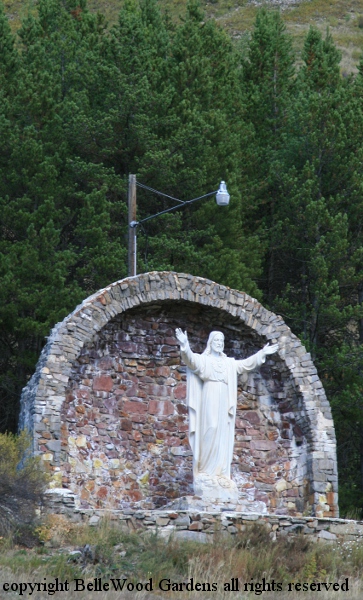
We take a small detour and pause for a look at the Christ of the Mines shrine
just north of Silverton and some 500 feet up the slope of Anvil Mountain.
The idea of the shrine was broached in the mid-20th century, with the statue arriving from Italy in the summer of 1959. An imposing 16 feet tall and carved of Carrara marble there are several miracles attributed to the shrine. When a lake above Sunnyside mine flooded one of the lower galleries it happened on June 4,1978, a Sunday, when the mines were closed so there were no deaths or injuries.
The trees behind the shrine are Scotch pines, planted by St. Patrick's Parish to improve the bare hillside appearance. Now, Silverton's frost-free growing season is only 14 days long, from July 25 to August 7. A solid grove of trees did mature from the 1,000 Scotch pine seedlings that were planted. Which some believe is also miraculous.
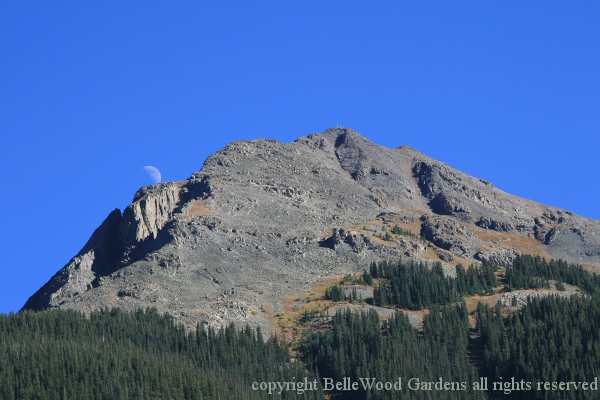
Moonrise over the mountain. We arrive in Silverton, elevation 9,318 feet.
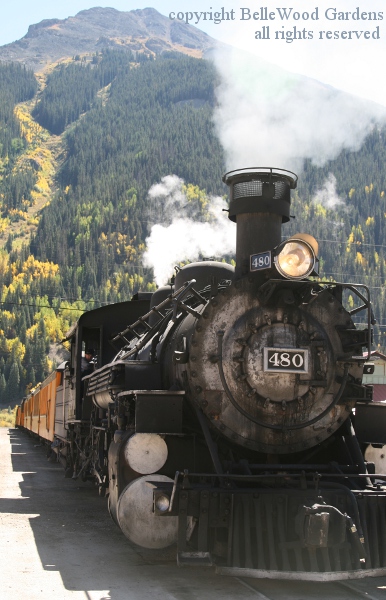
There is a train, a marvellous steam train, a narrow gauge heritage railroad that operates on 45 miles of track between Durango and Silverton. Federally designated as National Historic Landmark, it is also designated by the American Society of Civil Engineers as a Historic Civil Engineering Landmark. Not bad for a 3 foot wide, narrow gauge line that has been in operation continuously since 1881.
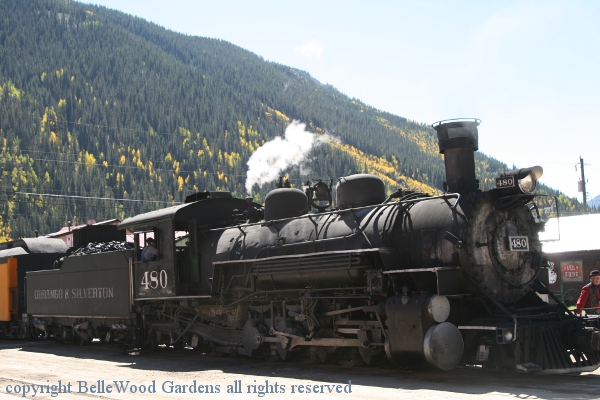
Now a tourist and heritage line hauling passengers rather than freight, the Durango & SIlverton Narrow Gauge railroad makes one way or round trips from Durango to Silverton, and back to Durango. The one way trip takes 3 1/2 hours, and crosses the Animas River five times from Durango to Silverton. After the passengers are unloaded, the train is turned on the wye, backs uptown to pick up returning passengers and makes the trip back to Durango.

A really excellent museum in town. Features the old jail, the sheriff's office and family quarters. But the truly extraordinary displays are downstairs, giving a great sense of being down in the mines. Old mining gear and equipment, safety equipment, mining cars and track, all with descriptive signage, and a display of minerals from the San Juan area mines and around the world.
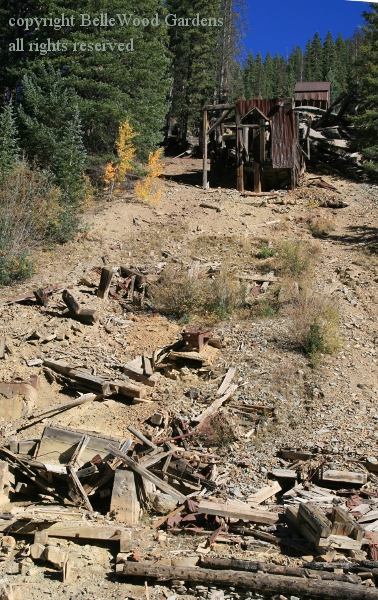
As we drive around - on roads and off-roading - what's often visible above ground are
the remnants of abandoned mines, collapsing, rotting, and dangerous to explore.
On Monday we go to Mesa Verde, to see cliff dwellings of the Ancient Ones.
There are other entries here, here and here
To Be Continued
Back to Top
Back to September 2015
Back to the main Diary Page